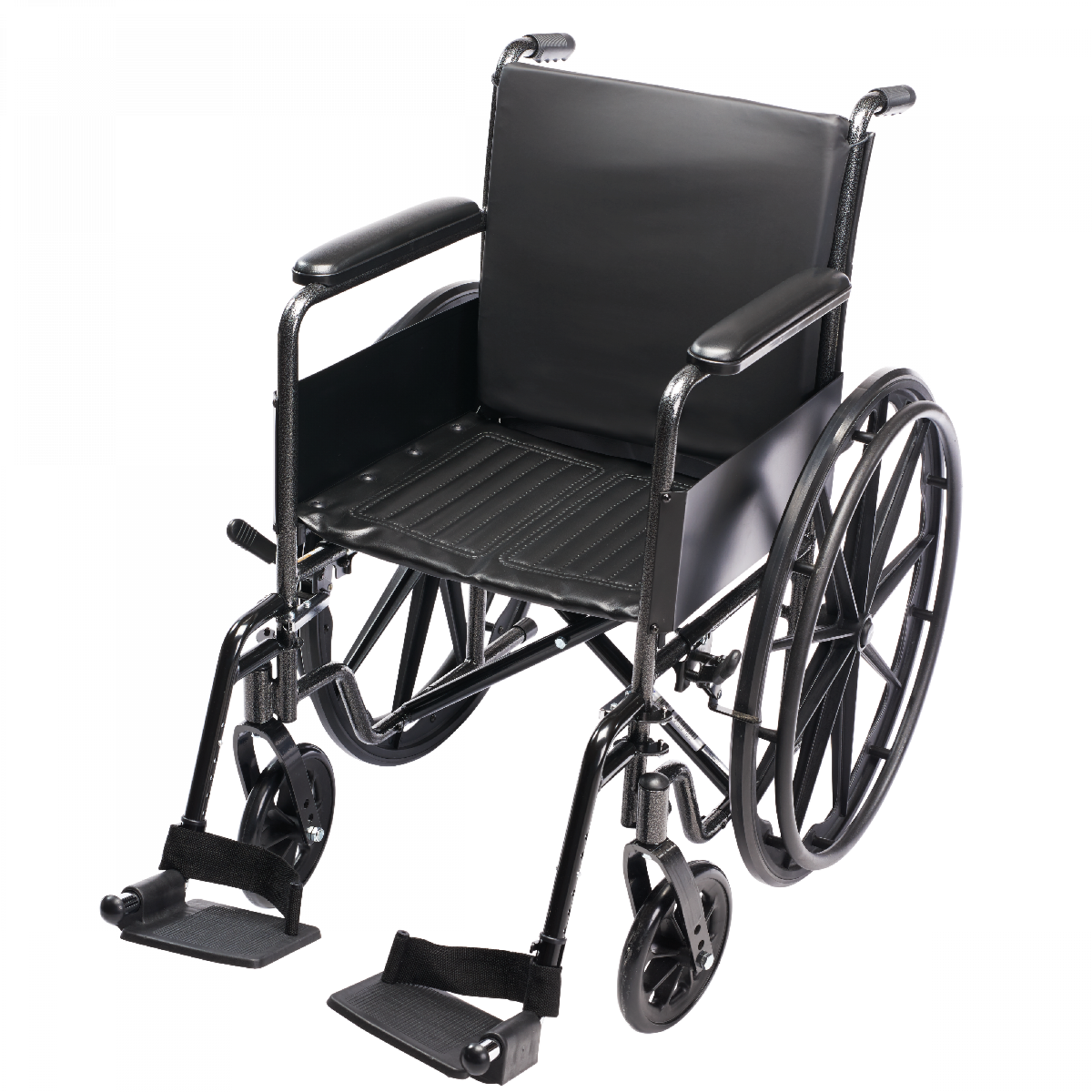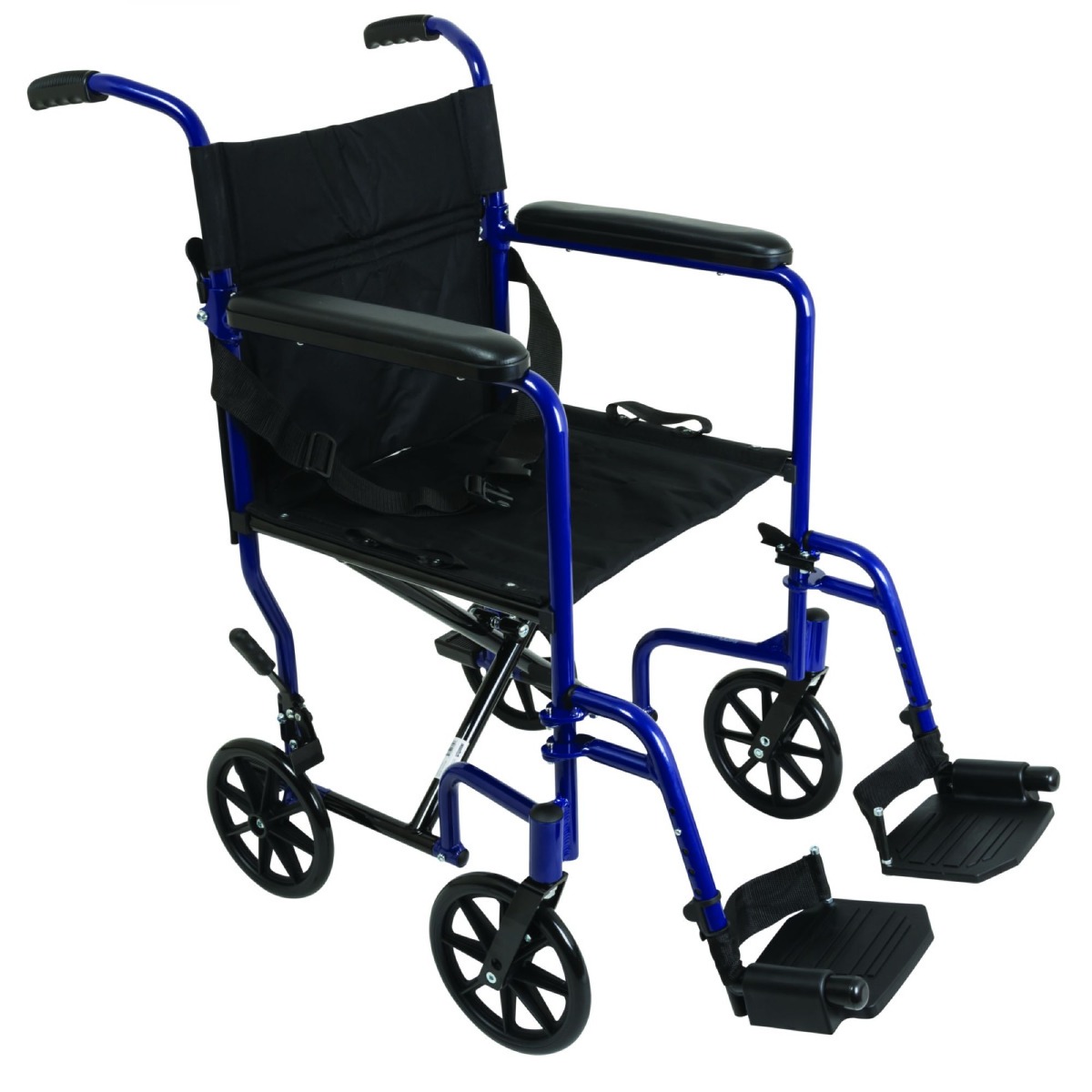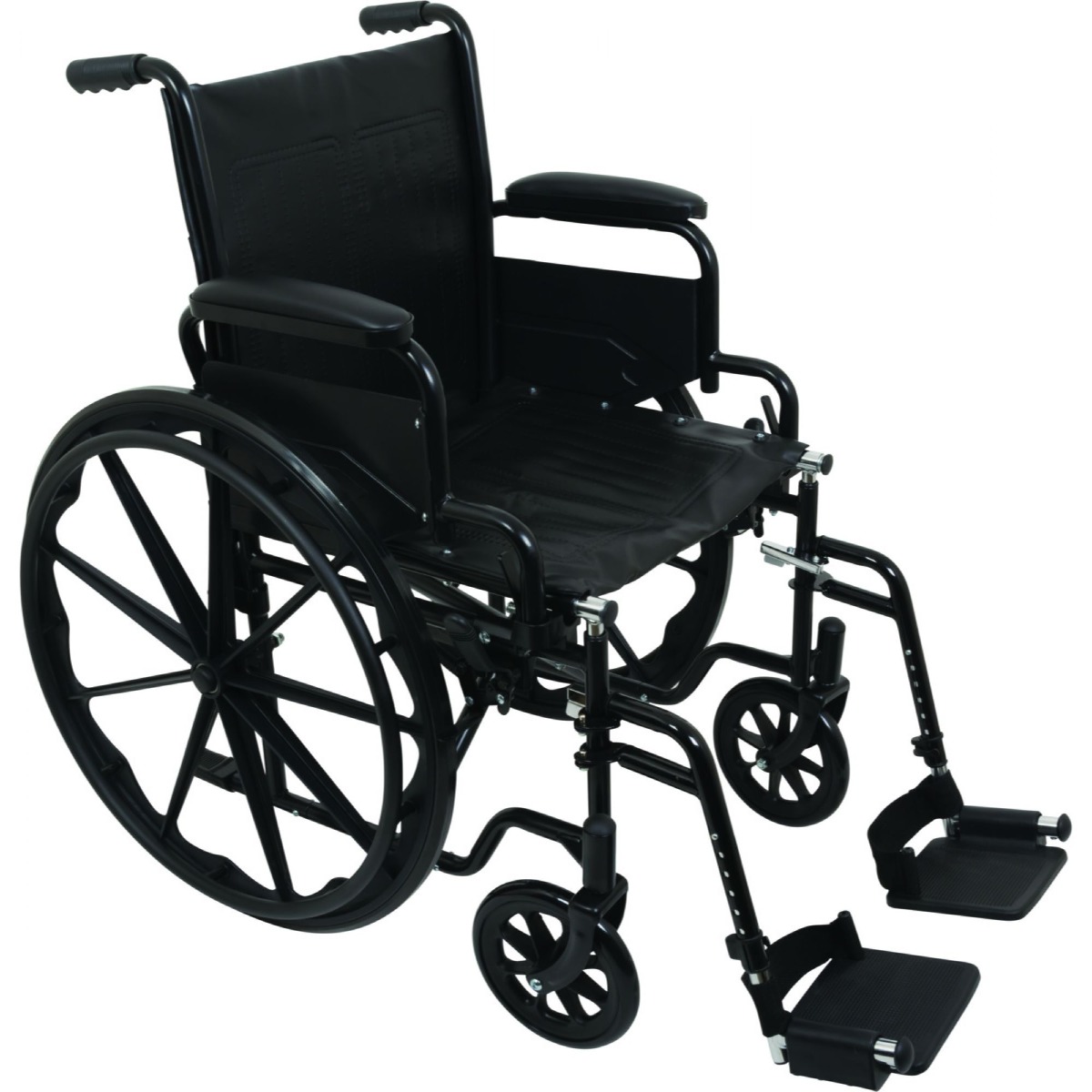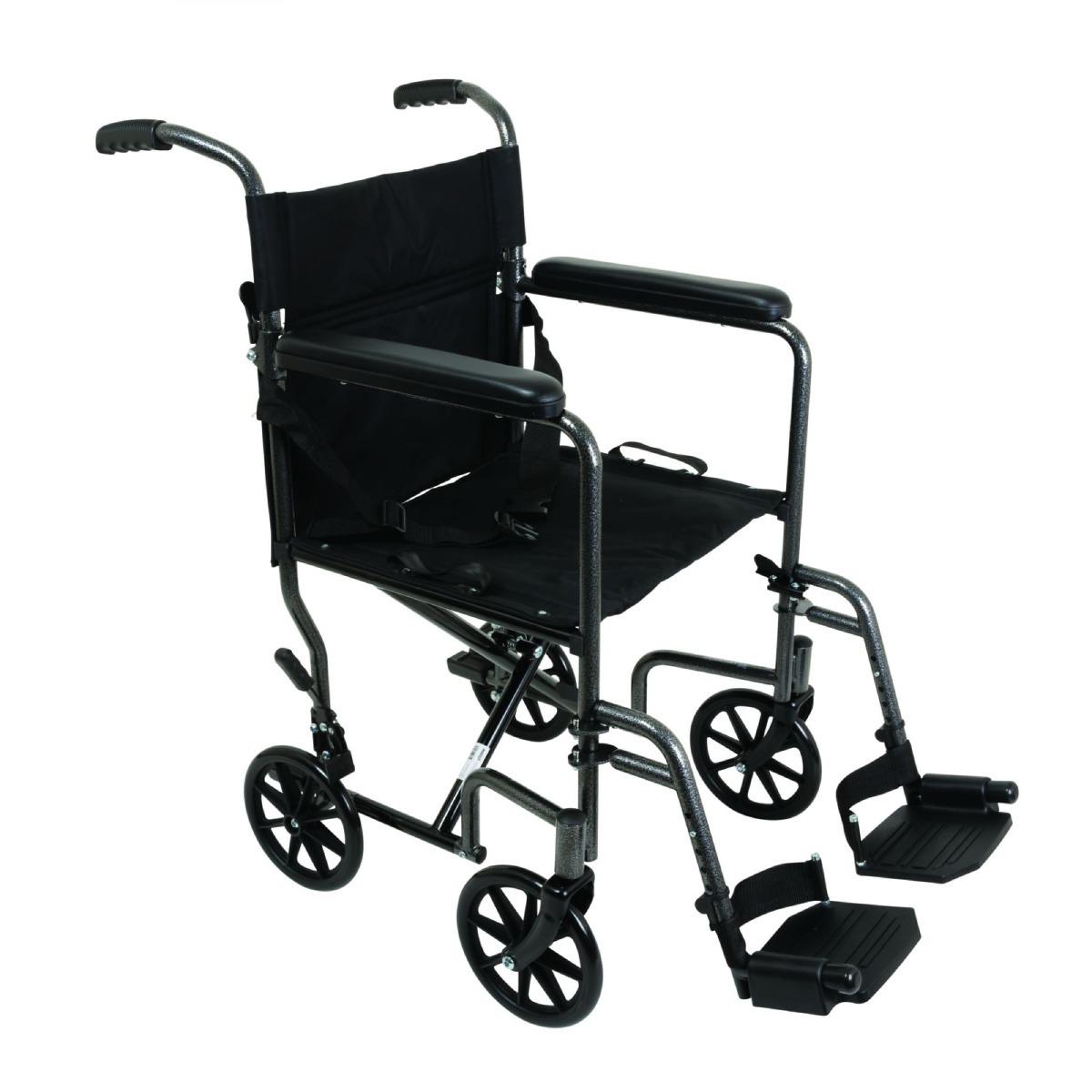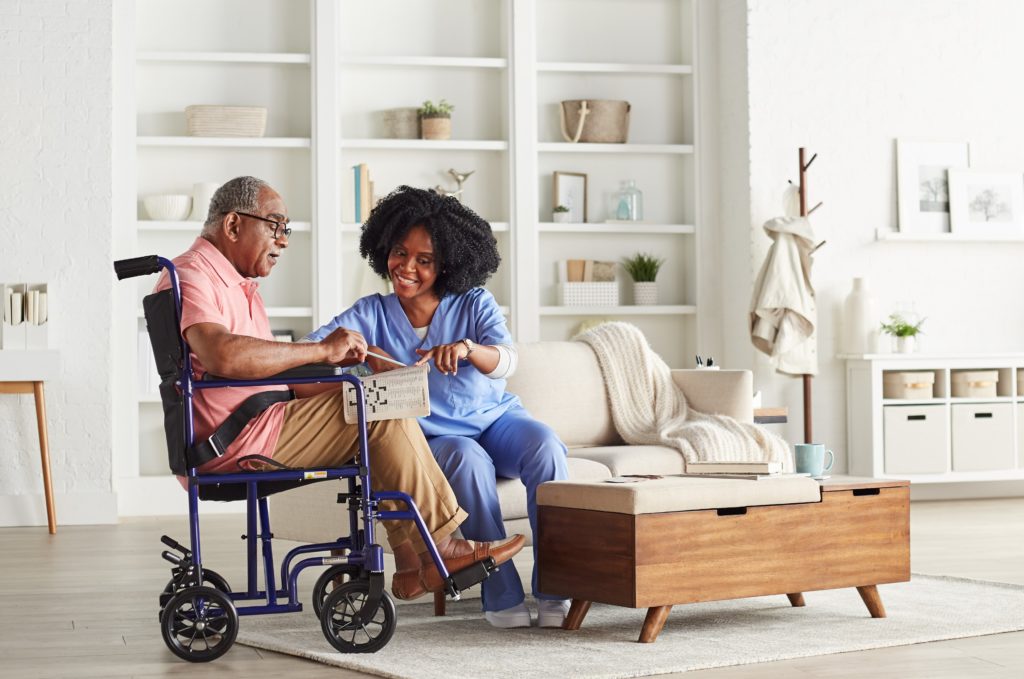If you need a mobility aid, you may be able to choose between a walker or a wheelchair. You may be left wondering, “Should I use a walker or a wheelchair?” There are a few things to consider when making your choice.
Types of Walkers
You can find several different types of walkers with various features, including: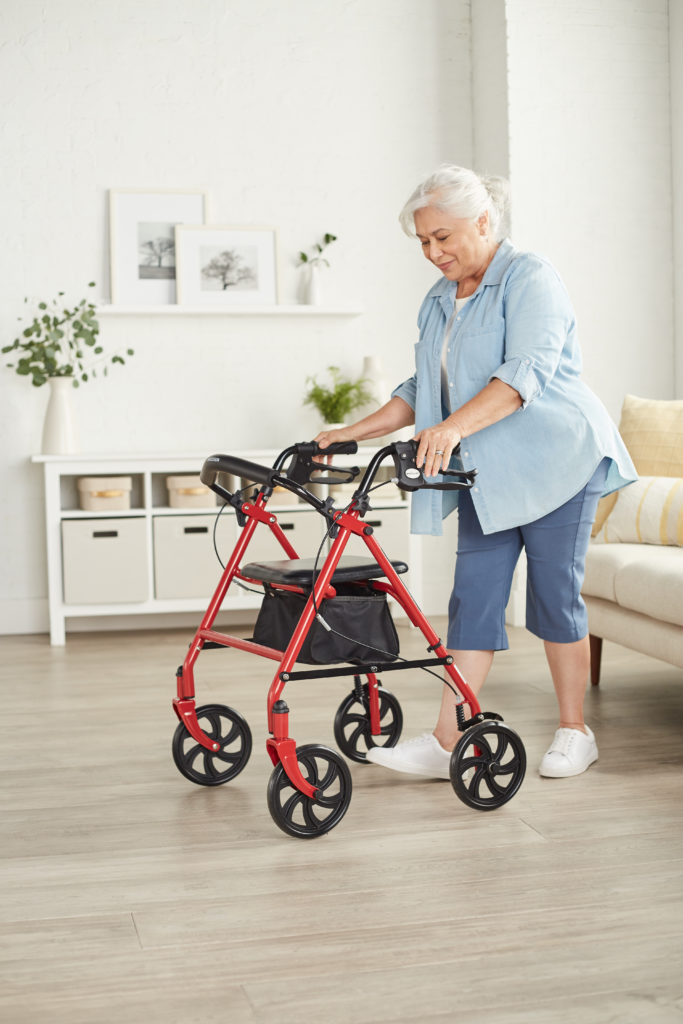
- Standard Walker: This is the classic four-leg walker without wheels. Instead, the legs have rubber tips to avoid skidding and provide stability. You’ll need to pick up the walker to move.
- Two-wheel Walker: This type of walker has wheels in the front to offer a bit of help with motion while also helping support your weight.
- Three-wheel Walker: This walker is lightweight and easy to maneuver, but it will not support all of your weight. It simply helps you maintain your balance.
- Four-wheel Walker: These are for people who have good balance but need a bit of help getting around. You can also find four-wheel walkers extra compartments for storage.
- Knee Walker: This walker offers a platform for resting your knee, which can be helpful if you have a knee or foot injury.
Other factors to consider when choosing a walker include grip type and height. When you stand with your arms hanging down, the walker grip should be at your wrists.
You also want to choose a comfortable grip. For instance, if you have arthritis, consider a walker with a larger grip.
Types of Wheelchairs
You can find a great variety of wheelchairs to fit your mobility needs. While there are many different subcategories to consider, wheelchairs can generally be divided into manual and powered wheelchairs.
Manual Wheelchairs: Manual wheelchairs are propelled by hand. You can have someone push the wheelchair or use your hands to spin the wheels for movement.
Depending on the  terrain you have to travel and your upper body strength, you can find lightweight and heavy chairs. You can also choose between the folding frame and rigid frame manual wheelchairs. You’ll also find reclining, bariatric, and footrest options when choosing your wheelchair.
terrain you have to travel and your upper body strength, you can find lightweight and heavy chairs. You can also choose between the folding frame and rigid frame manual wheelchairs. You’ll also find reclining, bariatric, and footrest options when choosing your wheelchair.
Powered Wheelchairs: Powered wheelchairs rely on a battery and a controller. These chairs make it easier to travel without having to use
both of your arms for movement and navigation constantly.
Powered wheelchairs come in various sizes. There are specialized wheelchairs able to carry respirators, speech devices, and other gadgets. Powered wheelchairs are usually adjustable, too. That means you can sit at just the right height for your body.
You can find powered wheelchairs that function in front-wheel drive, rear-wheel drive, or center-wheel drive. Some will also allow you to switch between drives for functionality.
Should I Choose a Walker or a Wheelchair?
You and your care team can decide the best option for your mobility needs based on your condition and recovery plan. In some cases, especially if you are recovering from an injury, your doctor or physical therapist might recommend starting with a wheelchair and then graduating with a walker. You can consider additional features such as safety features, design and color, recline and back support, storage, and more.
Whether you prefer a walker or a wheelchair, Gilgal Medical for our excellent selection today.




